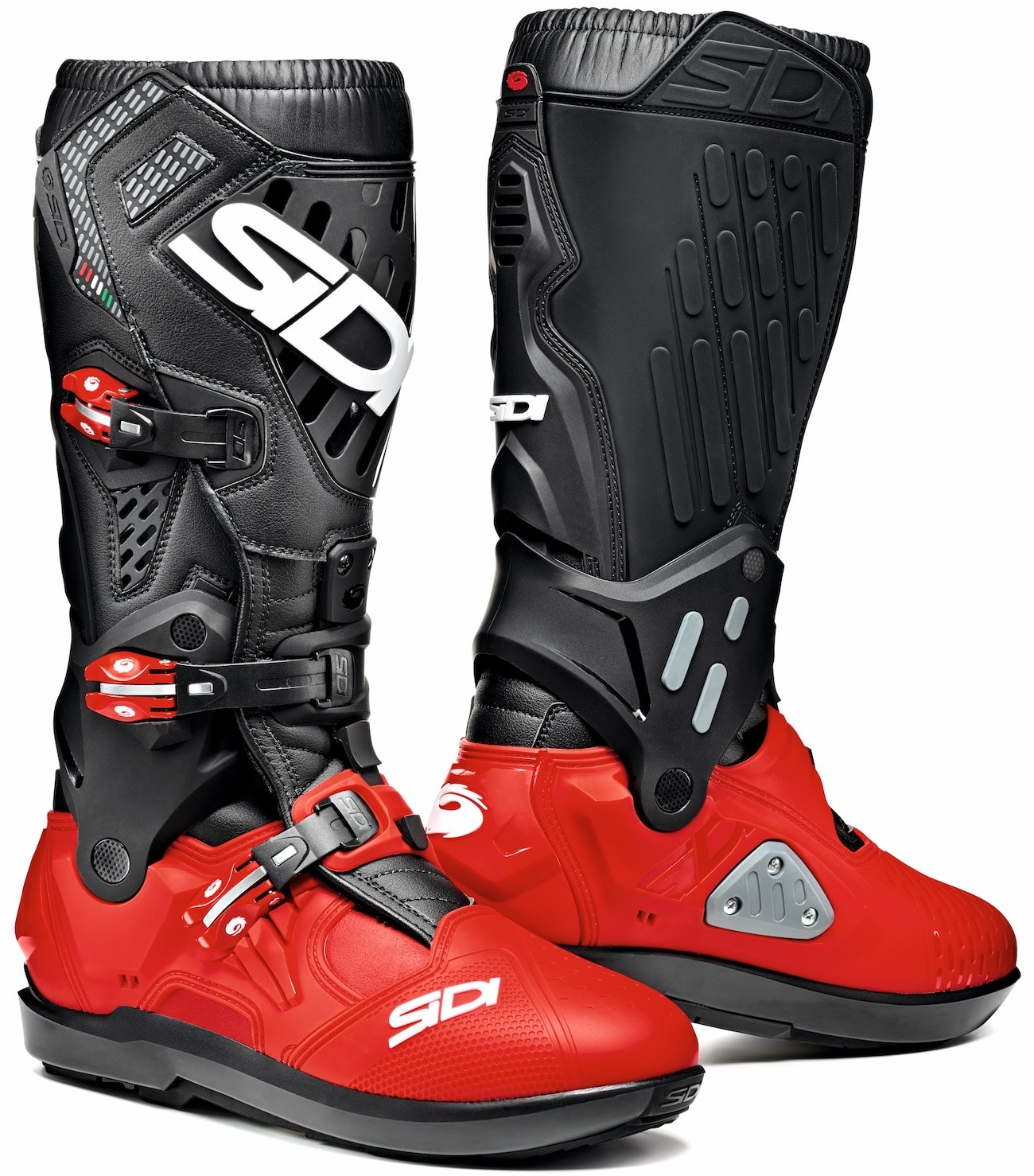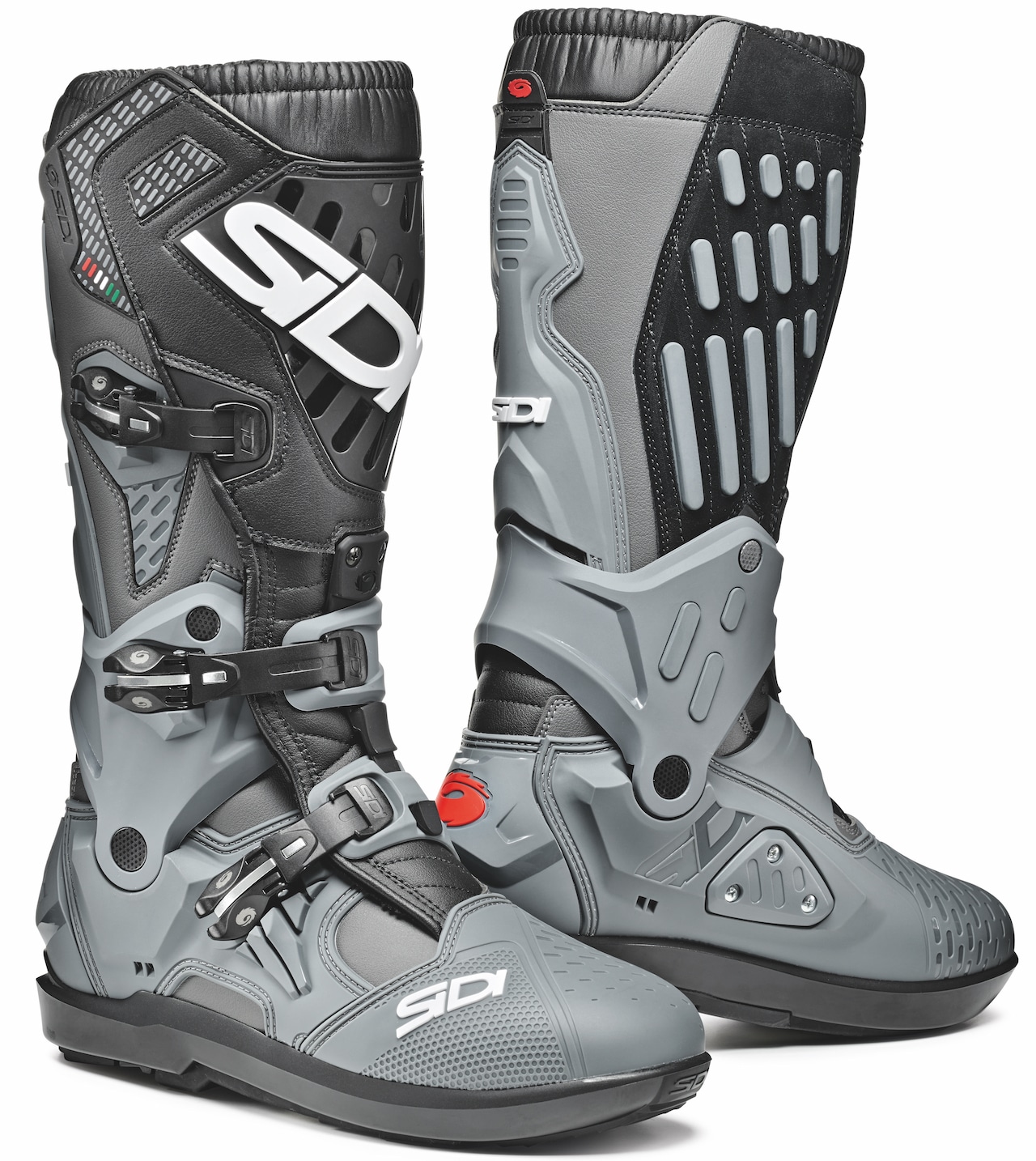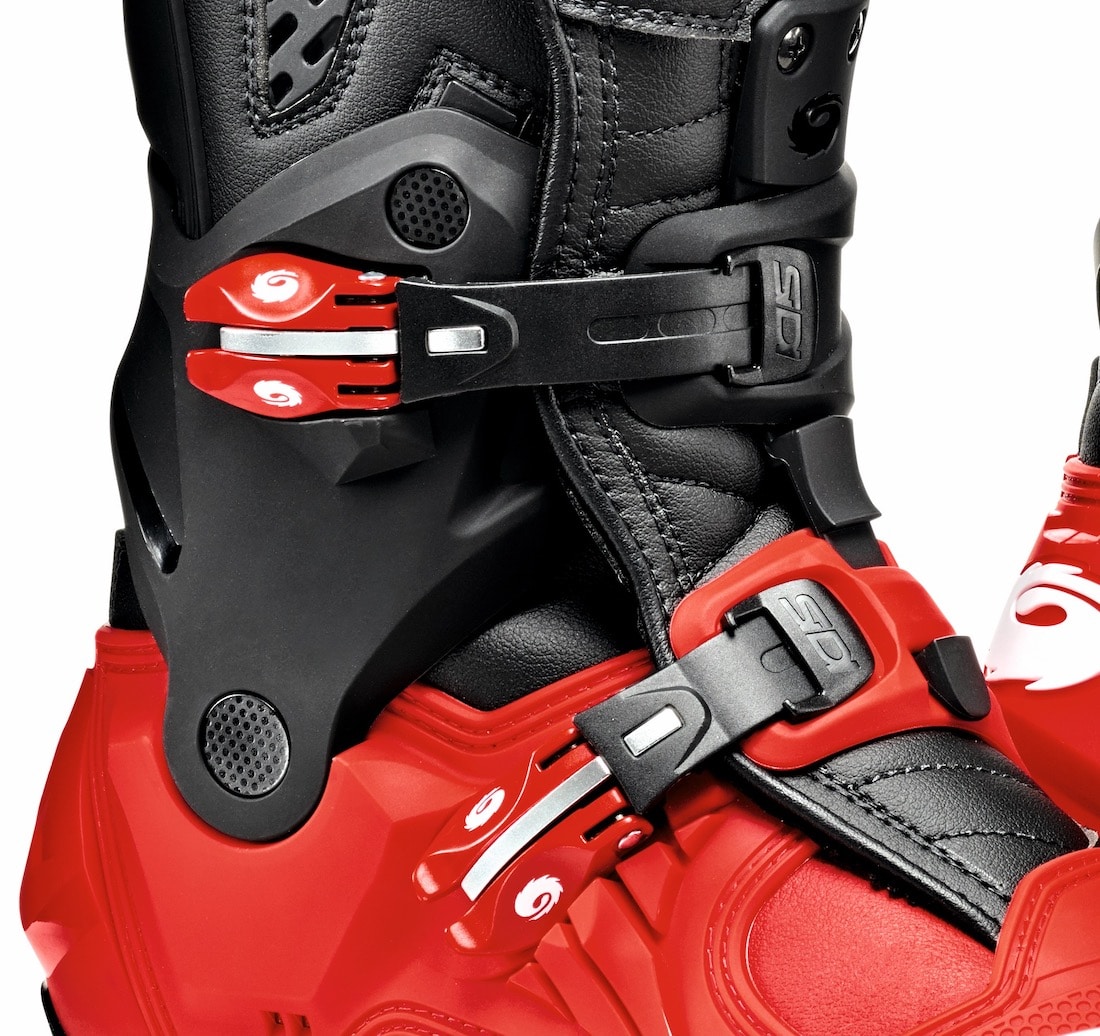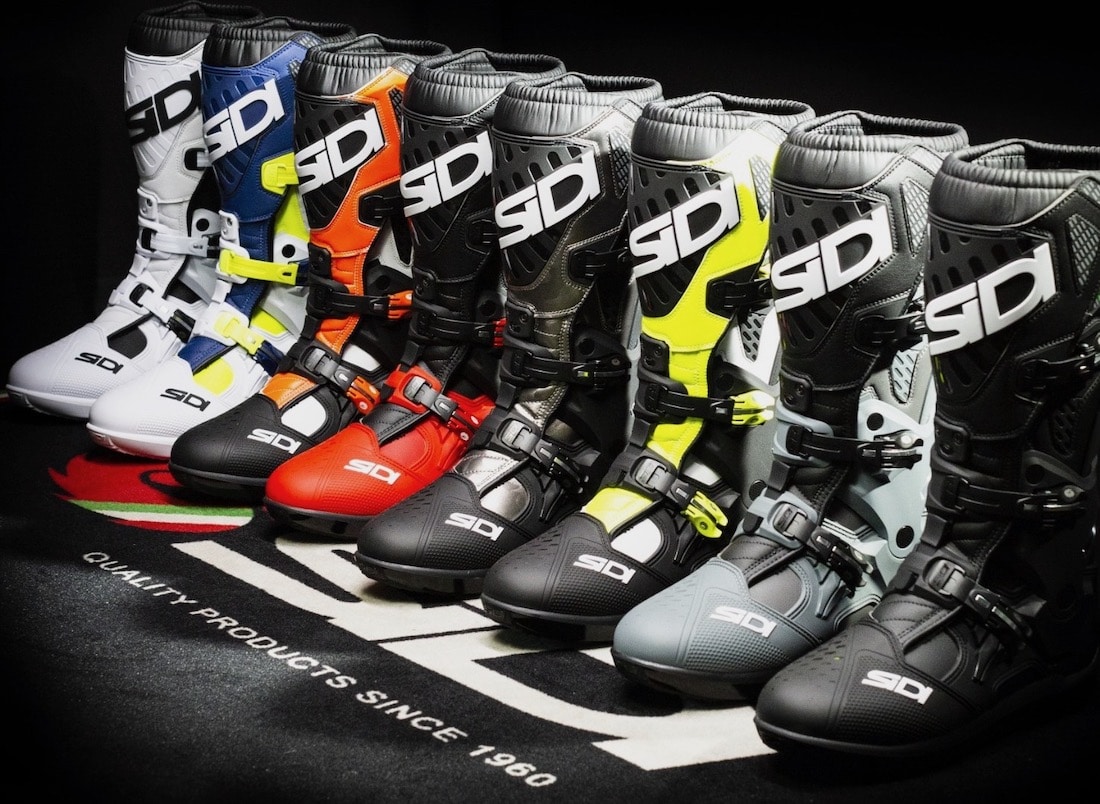MXA TEAM TESTED: SIDI ATOJO BOOTS
WHAT IS IT? The Sidi Atojo name comes from its developers. The “A” stands for Alessandro Lupino, the “TO” is for Tony Cairoli, and the “JO” for Jorge Prado. These three MXGP racers, along with vetted Sidi technicians, were the significant contributors to the development of the Atojo boot. Their goal was to create a boot that was lighter without sacrificing protection, more comfortable without forfeiting durability and had a fit that would satisfy a broader range of riders without sacrificing its Italian craftsmanship.
WHAT’S IT COST? $524.99.
CONTACT? www.motonation.com or (619) 401-4100.
WHAT STANDS OUT? Here’s a list of things that stand out with the Sidi Atojo boots.
(1) Build. The Atojo boot build is all about saving weight without compromising durability or safety. Sidi did most of the weight-shedding on the upper half of the boot by going with a three-buckle system and replacing much of the plastic with a suede material. The lower half of the boot has an all-new hinge system with two flex points. One hinge is below the ankle, while the other is above. This dual-hinge design allows for a limited range of movement to prevent hyper-extension of the ankle, instep and back tendon. There are a total of three anti-hyperextension systems on the Atojo. The first is located on the first hinge, the second on the back of the boot, and the third is an innovative replaceable system on the front of the boot that allows a specific amount of tibia flexion and stops if bending is excessive.
 The all-new, limited edition black and white model.
The all-new, limited edition black and white model.
(2) Weight. The Sidi Atojo is one of the lightest hinged boots on the market at 4 pounds, 3 ounces. In comparison, the Sidi Crossfire weighs 4 pounds, 11 ounces, and the Gaerne Endurance and Alpinestars Tech 7 both weigh 4 pounds, 4 ounces.
(3) Buckles. The three buckles on the Atojo are from the top-tier Crossfire 3 boot. Each buckle is mounted with a single screw that acts as its fixed point. This single pivot allows each buckle to move independently of the other buckles. We did note that our test riders had a harder time lining the buckles up and locking them down.
(4) Soles. The Atojo uses the same replaceable sole as the Crossfire 3 SR. You are able to unscrew the four quarter-turn screws with hand tools and replace the middle part of the boots’ sole (the replacement sole costs $35).
(5) Fit. These aren’t the slim Italian boots that Sidi is known for. Test riders who had wide feet and disliked the tight toe box of previous Sidis felt comfortable in the Atojos. Long-term Sidi fans didn’t mind the extra room and complimented the instant comfort and easier foot ingress and egress compared to the Crossfire 3 boots. The Atojo broke-in fast; however a hot spot developed on the ankle bone in the first few hours of the break-in process. Fortunately, we only felt it when walking in the pits. We wore thicker socks until the boots fully broke in.
(6) Sizing. We tested a size-10 boot. With the wider toe box, the Atojo had some extra room for our feet in comparison to the tighter Crossfire boots. If you like the tight feel of the Crossfire, then we suggest you go a half-size down. Most of our testers didn’t mind the extra room and kept their standard boot size.
(7) Feel. We loved the plush feel of the top of the boot. It contoured to our shin bone perfectly, with or without knee braces. On the track, the Atojo boot was great. It offered superb grip and feel on the pegs, the bike and the controls. The boot offered a connected feel to your foot, meaning that it didn’t restrict movement on the bike.
(8) Durability. Since there are fewer replaceable parts on the Atojo in comparison to the Crossfire 3, we will have to say that it lessens the durability of the boot; however, the most replaced part is the sole, and the Atojo sole is the same sole that is used on the tried-and-true Crossfire 3 SR. The Atojo’s greatest wear area seems to be the inside of the hinge system. Since this is the widest and bulkiest part of the boot, it takes most of the beating from the bike.
WHAT’S THE SQUAWK? We have two quibbles. (1) There is a hot spot during break-in. (2) The buckles don’t line up perfectly because they are free to move. 
MXA RATING: If you couldn’t fit in Sidis because of their slim lasts (“lasts” are the pieces that shape the length and width of the sole), you need to try the wider Sidi Atojo boots. It offers the broadest fit Sidi has ever made. On the track, the Atojo feels very light and nimble.







Comments are closed.